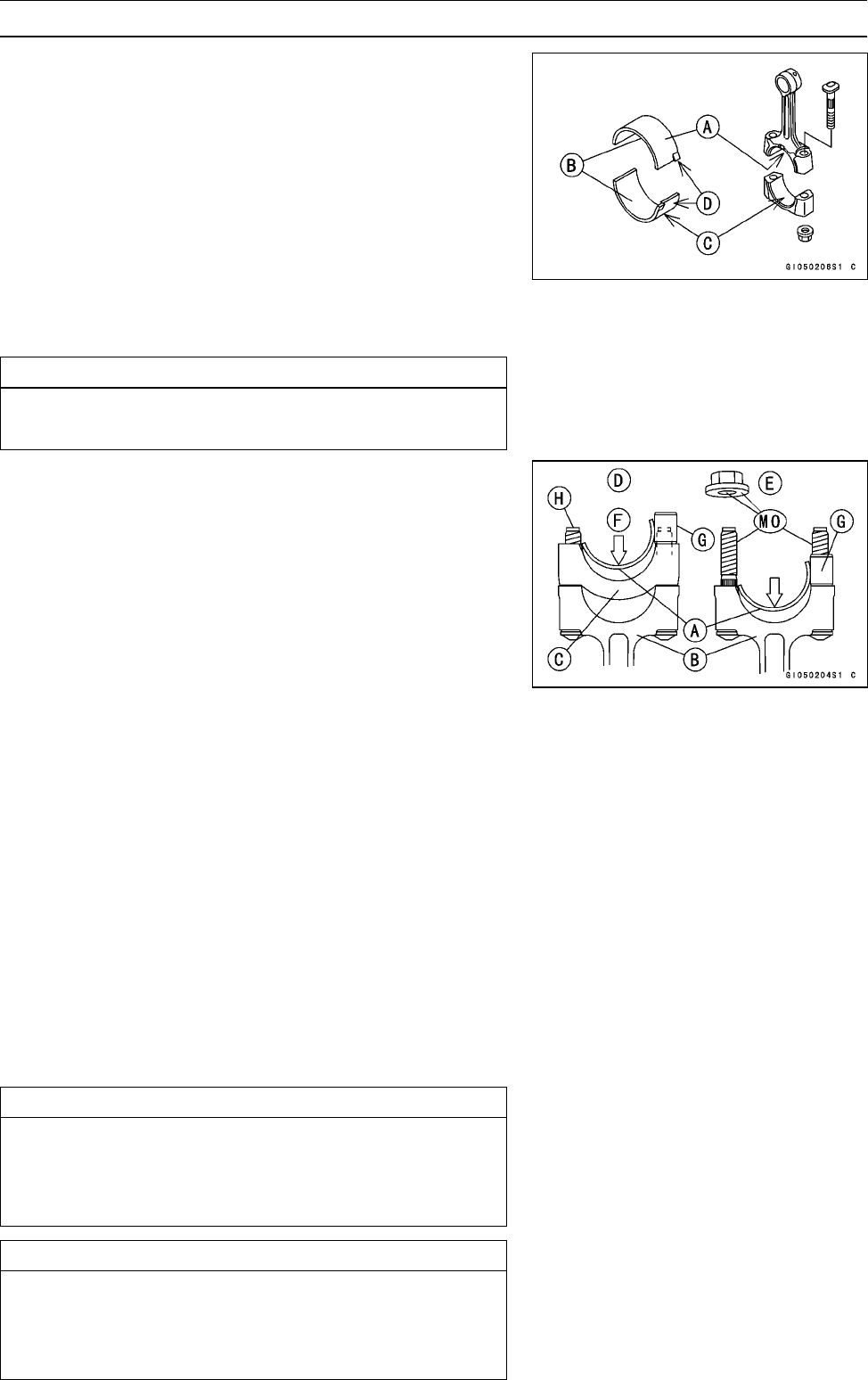
9-14 CRANKSHAFT/T RANSMISSION
Crankshaft and Connecting Rods
•
Apply molybdenum disulfide grease [A] to the outer sur-
face of the upper insert and the inner surface of the con-
necting rod big end.
•
Apply molybdenum disulfide oil [B] to the inner surfaces
of upper and lower bearing inserts.
○
The molybdenum disulfide oil is a m ixture of engine oil
and molybdenum disulfide grease with a weight ratio
(10:1).
○
Do not apply any grease or oil [C] to the cap inside and
cap insert outside.
○
Install the inserts so that their nails [D] are on the same
side and fit them into the recess of the connecting rod and
cap.
CAUTION
Wrong application of oil and grease could cause
bearing damage.
○
When installing the inserts [A], be careful not to damage
the insert surface with the edge of the connecting rod [B]
or the cap [C]. One way to install inserts is as follows:
Installation [D] to Cap
Installation [E] to Connecting Rod
Push [F]
Spare Dowel Pin [G]
Connecting Rod Bolts [H]
•
Install the cap on the connecting rod, aligning the weight
and diameter marks.
•
Remove debris and clean the surface of inserts.
•
Apply molybdenum disulfide oil [MO] to the threads and
seating surfaces of the big end nuts and bolts.
•
Install the crankshaft (see Crankshaft Installation).
•
Install each connecting rod on its original crankpin.
○
The connecting rod big end is bolted using the “plastic
region fastening method”.
○
This method precisely achieves the needed clamping
force without exceeding i t unnecessarily, allowing the
use of thinner, lighter bolts further decreasing connecting
rod weight.
○
There are two types of the plastic region fastening. One is
a bolt length measurement method and other is a rotation
angle method. Observe one of the following two, but the
bolt length measurement method is preferable because
this is a more reliable way to tighten the big end nuts.
CAUTION
The connecting rod bolts are designed to stretch
when tightened. Never reuse the connecting rod
bolts. See the table below for correct bolt and nut
usage.
CAUTION
Be careful not to overtighten the nuts.
The bolts must be positioned on the seating surface
correctly to prevent the bolt heads from hitting the
crankcase.


















